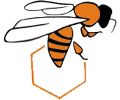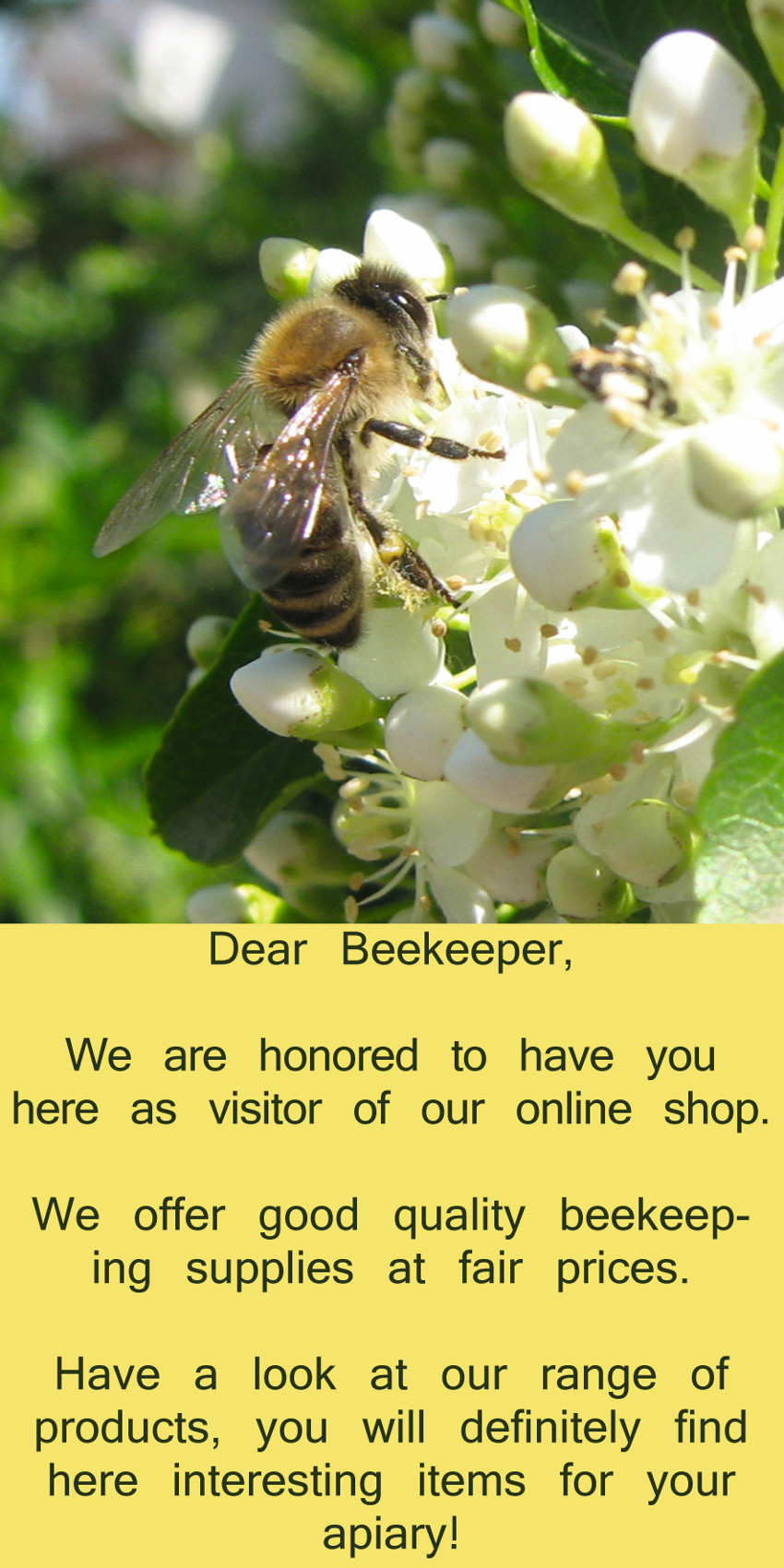

beekeeping equipment, materials and supplies for beekeeping
Contact us by mail at eurohonig.dep@gmail.com, by phone at +40 244 337 133, +40 744 823 628

 |
 |
Eurohonig
beekeeping equipment, materials and supplies for beekeeping Contact us by mail at eurohonig.dep@gmail.com, by phone at +40 244 337 133, +40 744 823 628 |  |
|
|
  Online Dispute Resolution |
Hive model Dadant Blatt Italica Carlini.It is the type used mainly in Italy but also adopted by beekeepers from several other countries. Description of the components.The bottom board is of the screened type with a metallic tray under it. This is a very good tool for observation of the bee colony. The activity of the colony is reflected in many ways by the debris that is to be found on the bottom board. The fall of Varroa mites, the existence of chalk brood, the appearance of signs of Nosema, the intensity of honey consumption and many more may be easily “read” by a trained eye in the debris on the tray of the meshed bottom board. The use of a sticky paper in the tray is a need in evaluation of Varroa infestation or the efficacy of the treatment before and respectively after an anti Varroa treatment. Even if the bees cannot reach the detritus collected there due to the mesh, often the ants can do it and by carrying the dead mites, they alter the valuable information available in this way. However, there are other additional advantages of this type of bottom board like effective ventilation in hot weather, very important especially when transporting the colonies. Another benefic aspect for the bees is the possibility of elimination of the carbon dioxide resulted from the metabolism of the bees that is heavier than the air and has the tendency of accumulation in the lower part of the hive. The brood box is of 10 Dadant frames kind. The walls of the box are 25 mm thick; the frames rests are equipped with castellated metal parts creating the right space between frames. For this reason, all the frames have sidebars of the same width as the top bar; in this way, the construction of the frame is simple, robust and they are suitable for uncapping by horizontal feeding uncapping machines. Two metallic handles, a ventilator-mouseguard entrance part and 3 metallic box corner pieces provide an easy and comfortable handling and use. The supers are also equipped with metallic castellated rests for nine frames. Thus, the bees will build a comb with deeper cells and, even in the absence of the queen excluder, the queen is less likely to climb in the supers and lay eggs there. This is very important for the quality of the honey extracted, in this system; the honey is extracted exclusively from super frames where the brood never existed. The quality of the wax of the super combs is also better than in Langstroth system. The optimal number of supers for one hive is three. One super is on the hive, in process of being loaded with honey by the bees. A second one may be in the honey house, the beekeeper waiting for the right time to extract the honey and a third one is in store, empty, waiting its turn to replace the one on the hive. The inner cover has such a construction that permits easy feeding of the bees, avoiding the risk of robbery, too. A 50 mm hole in the inner cover allows access of bees towards a plastic feeder, placed on top of the cover. The feeder may be removed when not needed and, by the use of a metallic disc, several other functions may be achieved like ventilation for transport, queen excluder or simple obturation of the hole for wintering period. The plastic feeder has the volume of 2 liters, and it is constructed as a siphon that does not allow the bees to get out of the hive through the feeder. The beekeeper can fill the feeder without opening the hive and the lid on top of the feeder prevents robbery. The outer cover is completely covered with zinc coated steel sheet in such a way that rainwater does never touch the wooden parts. The bee excluder is a simple masonite, wood and metallic mesh construction that permits passage of bees between the upper and the lower supper either in both directions or only downwards, by closing a small window provided with a metallic sliding lid. By closing this window the beekeeper determines the bees in the upper supper to descend while others cannot climb back. In this way, by closing the lids in the evening the upper supers are ready for extraction in the next morning. | ||